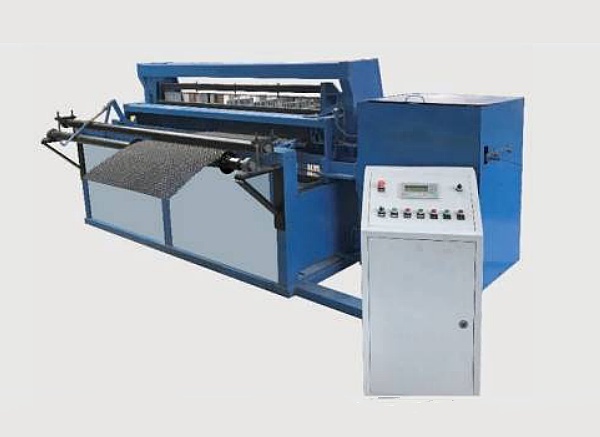
Beginner’s Guide: Operating an Automatic Crimped Wire Mesh Machine Efficiently
Category:News
Author:
Source:
Add time:2025-05-14 11:02
Automatic crimped wire mesh machines are transforming industries like mining, construction, and agriculture across South America, the Middle East, Southeast Asia, and Africa. However, for new operators in these regions—where technical training is limited and infrastructure challenges abound—learning to use such machinery efficiently can seem daunting. This guide simplifies the process, focusing on practical steps to maximize productivity while minimizing errors and downtime. We’ll also highlight how the DAPU Automatic Crimped Wire Mesh Machine is designed to simplify operations for beginners, even in demanding environments.

Understanding the Basics
Before diving into operations, let’s address common challenges faced by beginners in emerging markets:
Limited Training: Many operators learn on the job with minimal formal instruction.
Power Instability: Voltage fluctuations can disrupt machine performance.
Material Variability: Working with different wire diameters (2–5 mm) and mesh sizes (5–50 mm) requires adaptability.
Maintenance Gaps: Lack of routine care leads to premature wear and tear.
The DAPU machine mitigates these issues with user-friendly automation and robust design. Let’s break down how to operate it effectively.
Step 1: Pre-Operation Setup
A. Machine Installation
Stable Foundation: Place the machine on a flat, concrete floor to prevent vibrations (critical in regions with uneven terrain).
Power Connection:
Standard voltage: 380V 3-phase 50Hz (common in industrial zones).
For rural areas: Use DAPU’s customizable voltage option (e.g., single-phase or lower voltage) to match local grids.
Safety Check: Ensure emergency stop buttons and protective guards are functional.
Pro Tip: In areas with frequent power cuts (e.g., parts of Africa), pair the machine with a voltage stabilizer or backup generator.
B. Material Preparation
Wire Selection: Choose wires within the 2–5 mm diameter range (stainless steel, galvanized, or carbon steel).
Mesh Specifications: Input the desired mesh opening (5–50 mm) and width (2 meters) into the PLC system.
Why This Matters: Incorrect wire or mesh settings waste materials—a costly mistake in budget-sensitive markets.
Step 2: Machine Configuration
A. PLC System Setup
The DAPU machine’s programmable logic controller (PLC) is the brain of operations:
Input Parameters: Use the touchscreen to set:
Wire diameter
Mesh size
Weaving speed (20–30 r/min)
Automatic Calibration: The system self-adjusts tension and alignment based on your inputs.
Beginner-Friendly Feature: Pre-loaded templates for common applications (e.g., mining screens, construction mesh) simplify setup.
B. Test Run
Conduct a 5-minute test with scrap wire to verify:
Wire feeding accuracy.
Mesh flatness (errors should be <1 mm).
Adjust speed or tension if needed via the PLC interface.
Step 3: Production Workflow
A. Starting the Machine
Power on the servo motor (1.5 kW) and PLC system.
Load wire spools onto the feeder.
Press the “Start” button—the machine handles embossing, weaving, and heddle changes automatically.
Key Advantage: DAPU’s automation reduces manual tasks, ideal for regions with labor shortages.
B. Monitoring Operations
Watch for Alerts: The PLC displays real-time warnings for issues like wire jams or low voltage.
Quality Checks: Periodically measure mesh openings with a caliper to ensure consistency.
Pro Tip: In dusty environments (e.g., Middle Eastern quarries), clean the sensor lenses hourly to maintain accuracy.
Step 4: Routine Maintenance
Regular upkeep is crucial in humid or dusty regions:
Daily Tasks
Lubricate moving parts (e.g., rollers, bearings) to prevent rust.
Clear debris from wire feeders and cutting blades.
Weekly Tasks
Inspect servo motor belts for wear.
Tighten bolts and screws weakened by vibrations (common in mining sites).
DAPU Advantage: Modular components allow quick part replacement—no need for specialized technicians.
Step 5: Troubleshooting Common Issues
Problem 1: Wire Misalignment
Cause: Dust buildup or incorrect tension.
Fix: Pause the machine, clean sensors, and recalibrate via the PLC.
Problem 2: Power Interruptions
Cause: Voltage drops in unstable grids.
Fix: Enable DAPU’s “Power Recovery Mode” to resume operations automatically after outages.
Problem 3: Uneven Mesh Surface
Cause: Worn rollers or incorrect speed settings.
Fix: Replace rollers and reduce speed to 20 r/min for delicate materials.
Why DAPU Is Ideal for Beginners
Intuitive PLC Interface: Minimal training required—operators can master basics in 1–2 days.
Error-Reduction Features: Auto-correction systems compensate for beginner mistakes.
Durability: Withstands rough handling common in regions with less experienced crews.
Local Support: DAPU partners provide on-call assistance in multiple languages (e.g., Spanish, Arabic, Bahasa).
Case Study: Success in Nigeria
A Nigerian construction firm with no prior automation experience used the DAPU machine to produce reinforcement mesh for road projects. Within a week, operators achieved 90% efficiency by relying on pre-set PLC templates and automated alerts. The project cut labor costs by 35% and met tight deadlines.
Conclusion
Operating an automatic crimped wire mesh machine efficiently isn’t about complexity—it’s about leveraging smart design and automation. For beginners in regions like South America, Africa, or Southeast Asia, the DAPU Automatic Crimped Wire Mesh Machine simplifies learning curves while delivering industrial-grade results. By following this guide and utilizing DAPU’s user-centric features, even novice operators can minimize downtime, reduce waste, and maximize productivity.
Recommend News




